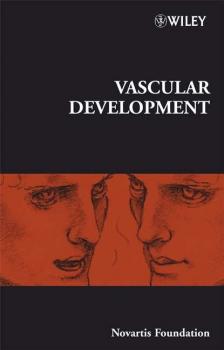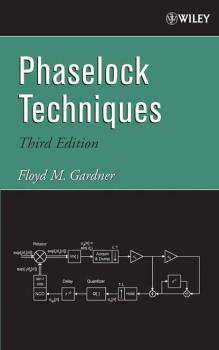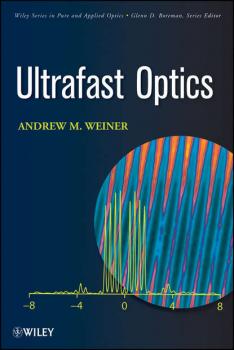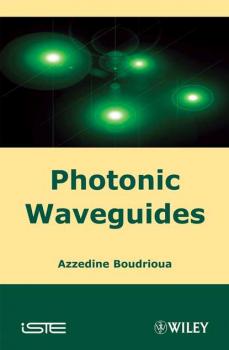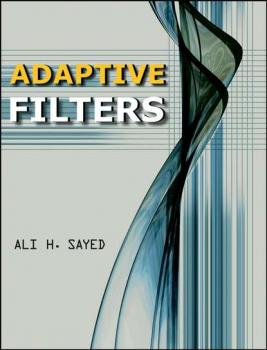ТОП просматриваемых книг сайта:
Прочая образовательная литература
Различные книги в жанре Прочая образовательная литература, доступные для чтения и скачиванияАннотация
The formation of blood vessels is an essential aspect of embryogenesis in vertebrates. It is a central feature of numerous post-embryonic processes, including tissue and organ growth and regeneration. It is also part of the pathology of tumour formation and certain inflammatory conditions. In recent years, comprehension of the molecular genetics of blood vessel formation has progressed enormously and studies in vertebrate model systems, especially the mouse and the zebrafish, have identified a common set of molecules and processes that are conserved throughout vertebrate embryogenesis while, in addition, highlighting aspects that may differ between different animal groups. The discovery in the past decade of the crucial role of new blood vessel formation for the development of cancers has generated great interest in angiogenesis (the formation of new blood vessels from pre-existing ones), with its major implications for potential cancer-control strategies. In addition, there are numerous situations where therapeutic treatments either require or would be assisted by vasculogenesis (the de novo formation of blood vessels). In particular, post-stroke therapies could include treatments that stimulate neovascularization of the affected tissues. The development of such treatments, however, requires thoroughly understanding the developmental properties of endothelial cells and the basic biology of blood vessel formation. While there are many books on angiogenesis, this unique book focuses on exactly this basic biology and explores blood vessel formation in connection with tissue development in a range of animal models. It includes detailed discussions of relevant cell biology, genetics and embryogenesis of blood vessel formation and presents insights into the cross-talk between developing blood vessels and other tissues. With contributions from vascular biologists, cell biologists and developmental biologists, a comprehensive and highly interdisciplinary volume is the outcome.
Аннотация
Starting from basic electrodynamics, this volume provides a solid, yet concise introduction to theoretical optics, containing topics such as nonlinear optics, light-matter interaction, and modern topics in quantum optics, including entanglement, cryptography, and quantum computation. The author, with many years of experience in teaching and research, goes way beyond the scope of traditional lectures, enabling readers to keep up with the current state of knowledge. Both content and presentation make it essential reading for graduate and phD students as well as a valuable reference for researchers.
Аннотация
A greatly revised and expanded account of phaselock technology The Third Edition of this landmark book presents new developments in the field of phaselock loops, some of which have never been published until now. Established concepts are reviewed critically and recommendations are offered for improved formulations. The work reflects the author's own research and many years of hands-on experience with phaselock loops. Reflecting the myriad of phaselock loops that are now found in electronic devices such as televisions, computers, radios, and cell phones, the book offers readers much new material, including: * Revised and expanded coverage of transfer functions * Two chapters on phase noise * Two chapters examining digital phaselock loops * A chapter on charge-pump phaselock loops * Expanded discussion of phase detectors and of oscillators * A chapter on anomalous phaselocking * A chapter on graphical aids, including Bode plots, root locus plots, and Nichols charts As in the previous editions, the focus of the book is on underlying principles, which remain valid despite technological advances. Extensive references guide readers to additional information to help them explore particular topics in greater depth. Phaselock Techniques, Third Edition is intended for practicing engineers, researchers, and graduate students. This critically acclaimed book has been thoroughly updated with new information and expanded for greater depth.
Аннотация
All integrated optical components and devices make use of «waveguides», where light is confined by total internal reflection. The elements in such «photonic chip» are interconnected through waveguides, and also the integrated optics components themselves are fabricated using waveguide configuration, such as couplers, switches, modulators, multiplexors, amplifiers and lasers, etc. These components are integrated in a single substrate, thus resulting in a compact and robust photonic device, which can be optically connected through optical fibres. With and increase in the number of integrated optical components and devices emerging from the research laboratories to the market place an up-to-date book is essential in collecting, summarizing and presenting the new developed photonic devices. This includes fundamental aspects, technical aspects (such as fabrication techniques and materials) and characterisation and performance. This is an advanced text aimed at specialists in the field of photonics, but who may be new to the field of integrated photonics. The fundamental aspects have been carefully considered, and all the topics covered by the book start at a medium level, making it highly relevant for undergraduate and post-graduate students following this discipline.
Аннотация
Microwave photonics is an important interdisciplinary field that, amongst a host of other benefits, enables engineers to implement new functions in microwave systems. With contributions from leading experts, Microwave Photonics: Devices and Applications explores this rapidly developing discipline. It bridges a gap between microwave and photonic engineering, providing an accessible interpretation of the current available research material and a detailed introduction to various aspects of the area. Opening with an overview to the subject, this book covers direct modulation, photonic oscillators for THz signal generation, and terahertz sources. It takes a unique application- focused approach and describes: analogue fibre-optic links; fibre radio technology; microwave photonic signal processing; measurement of microwave photonic components, and; biomedical applications. This text is ideal for practising microwave and fibre optics communication engineers wishing to improve their knowledge, and for researchers and graduate students wanting an overview of the subject.
Аннотация
This book provides an excellent reference for all professionals working in the area of array signal processing and its applications in wireless communications. Wideband beamforming has advanced with the increasing bandwidth in wireless communications and the development of ultra wideband (UWB) technology. In this book, the authors address the fundamentals and most recent developments in the field of wideband beamforming. The book provides a thorough coverage of the subject including major sub-areas such as sub-band adaptive beamforming, frequency invariant beamforming, blind wideband beamforming, beamforming without temporal processing, and beamforming for multi-path signals. Key Features: Unique book focusing on wideband beamforming Discusses a hot topic coinciding with the increasing bandwidth in wireless communications and the development of UWB technology Addresses the general concept of beamforming including fixed beamformers and adaptive beamformers Covers advanced topics including sub-band adaptive beamforming, frequency invariant beamforming, blind wideband beamforming, beamforming without temporal processing, and beamforming for multi-path signals Includes various design examples and corresponding complexity analyses This book provides a reference for engineers and researchers in wireless communications and signal processing fields. Postgraduate students studying signal processing will also find this book of interest.
Аннотация
A human observer is able to recognize the color of objects irrespective of the light used to illuminate them. This is called color constancy. A digital camera uses a sensor to measure the reflected light, meaning that the measured color at each pixel varies according to the color of the illuminant. Therefore, the resulting colors may not be the same as the colors that were perceived by the observer. Obtaining color constant descriptors from image pixels is not only important for digital photography, but also valuable for computer vision, color-based automatic object recognition, and color image processing in general. This book provides a comprehensive introduction to the field of color constancy, describing all the major color constancy algorithms, as well as presenting cutting edge research in the area of color image processing. Beginning with an in-depth look at the human visual system, Ebner goes on to: examine the theory of color image formation, color reproduction and different color spaces; discuss algorithms for color constancy under both uniform and non-uniform illuminants; describe methods for shadow removal and shadow attenuation in digital images; evaluate the various algorithms for object recognition and color constancy and compare this to data obtained from experimental psychology; set out the different algorithms as pseudo code in an appendix at the end of the book. Color Constancy is an ideal reference for practising engineers, computer scientists and researchers working in the area of digital color image processing. It may also be useful for biologists or scientists in general who are interested in computational theories of the visual brain and bio-inspired engineering systems.
Аннотация
A comprehensive treatment of ultrafast optics This book fills the need for a thorough and detailed account of ultrafast optics. Written by one of the most preeminent researchers in the field, it sheds new light on technology that has already had a revolutionary impact on precision frequency metrology, high-speed electrical testing, biomedical imaging, and in revealing the initial steps in chemical reactions. Ultrafast Optics begins with a summary of ultrashort laser pulses and their practical applications in a range of real-world settings. Next, it reviews important background material, including an introduction to Fourier series and Fourier transforms, and goes on to cover: Principles of mode-locking Ultrafast pulse measurement methods Dispersion and dispersion compensation Ultrafast nonlinear optics: second order Ultrafast nonlinear optics: third order Mode-locking: selected advanced topics Manipulation of ultrashort pulses Ultrafast time-resolved spectroscopy Terahertz time-domain electromagnetics Professor Weiner's expertise and cutting-edge research result in a book that is destined to become a seminal text for engineers, researchers, and graduate students alike.
Аннотация
This book presents the principles of non-linear integrated optics. The first objective is to provide the reader with a thorough understanding of integrated optics so that they may be able to develop the theoretical and experimental tools to study and control the linear and non-linear optical properties of waveguides. The potential use of these structures can then be determined in order to realize integrated optical components for light modulation and generation. The theoretical models are accompanied by experimental tools and their setting in order to characterize the studied phenomenon. The passage from theory to practice makes the comprehension of the physical phenomena simple and didactic. The book also gives a presentation of the industrial applications of the integrated optical components. The studied topics range from the theory of waveguides and the linear and non-linear optical characterization techniques to photonic crystals. This last field constitutes a major challenge of photonic technologies of the 21st century.
Аннотация
Adaptive filtering is a topic of immense practical and theoretical value, having applications in areas ranging from digital and wireless communications to biomedical systems. This book enables readers to gain a gradual and solid introduction to the subject, its applications to a variety of topical problems, existing limitations, and extensions of current theories. The book consists of eleven parts?each part containing a series of focused lectures and ending with bibliographic comments, problems, and computer projects with MATLAB solutions.

